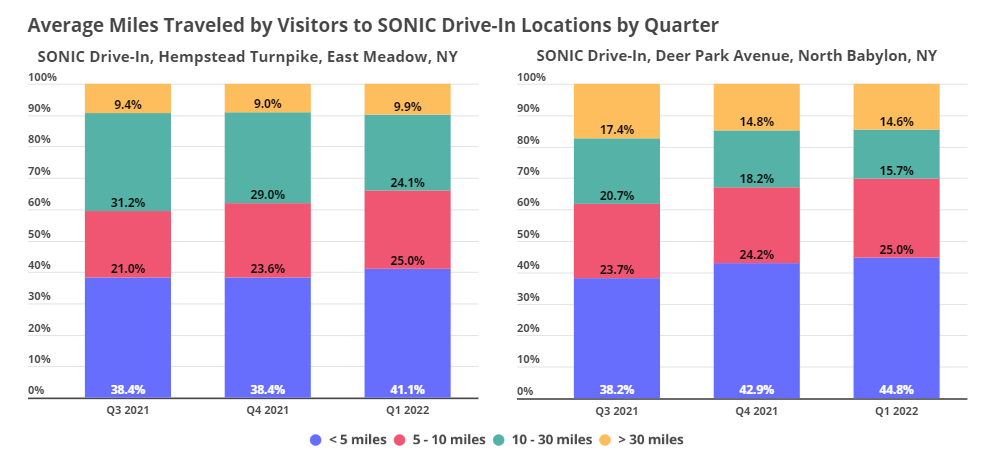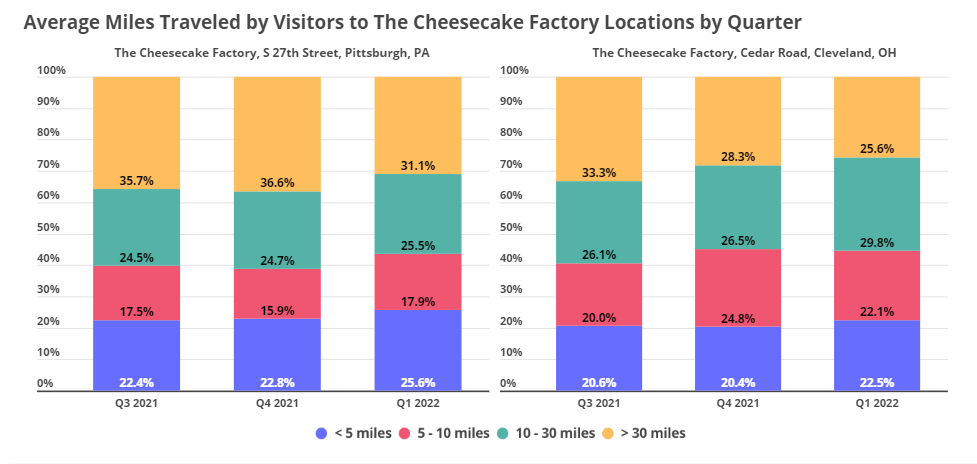
Our latest white paper dives into the dining sector. We examined how this sector is evolving, tapping into community resources, and adapting to consumer desires – and looked at the challenges the industry may be facing. Below is a taste of our findings.
Defining the “Out” in “Eating Out”
Inflation rates have recently begun to rise worldwide, and the United States is feeling the impact. Gas prices have also hit historic highs over the past few months, and consumers have been adjusting their dining habits accordingly. These changes may not only impact how often people go out to grab a bite, but also how far they are willing to drive for their meal. We took a closer look at the data to see how these factors may be driving dining trends.
Gas Prices Impact Dining Habits
While many restaurants suffered early on in the pandemic, one chain’s mode of operation proved very successful. As their name implies, SONIC Drive-In offered customers the best dining experience by COVID standards: With many people reluctant to potentially expose themselves to COVID when dining out, eating in one’s car suddenly proved highly appealing. But as consumers have gotten used to life with COVID and with the new challenge posed by rising gas prices, the draw that once brought in customers may now be keeping them away, with February 2022 seeing the smallest Yo2Y increase in SONIC Drive-In visits since 2020.

Shorter Drives to the Drive-In
And it’s not just overall visits that have fallen – Q1 2022 also saw a dip in the distances customers are traveling to reach SONIC Drive-In venues. This can be seen by consumer behavior data from the top two SONIC Drive-In locations in New York, which shows a significant rise in the share of visitors driving less than five miles to reach the venue.
In Q1 2022, 41.1% of visitors traveled less than five miles to reach the East Meadow, NY location – up from 38.4% in Q3 and Q4 of 2021. In North Babylon, NY, 44.8% of visitors traveled less than five miles to reach the restaurant in Q1, up from only 38.2% of visitors in Q3 2021. And in both locations, the share of visitors traveling 10 miles or more has dropped significantly. This means that the drop in overall visits is likely coming from SONIC Drive-In patrons living further away who decided to forego their trips to the drive-in until prices level out.

Diners Prefer Staying Local
The fast food category is not the only one feeling the impact of high gas prices – full service restaurant visitors are also driving shorter distances to get to their destinations. For example, The Cheesecake Factory in Pittsburgh, PA saw the share of visitors traveling less than five miles increase to 25.6% in Q1 2022, compared with just 22.4% in Q3 2021.
Similarly, the number of visitors driving less than five miles to reach The Cheesecake Factory in Cleveland, OH has risen from 20.4% in Q4 2021 to 22.5% in Q1 2022. At the same time, the share of visitors who had previously been willing to drive over 30 miles to dine at The Cheesecake Factory dropped from 35.7% to 31.1% for Pittsburgh and from 33.3% to 25.6% for Cleveland between Q3 2021 and Q1 2022.
These numbers seem to indicate that more and more, customers who are looking to dine out are opting to stay local when choosing where to eat.

To learn more about the data behind this article and what Placer has to offer, visit https://www.placer.ai/.







Sign up to receive our stories in your inbox.
Data is changing the speed of business. Investors, Corporations, and Governments are buying new, differentiated data to gain visibility make better decisions. Don't fall behind. Let us help.













Sign up to receive our stories in your inbox.
Data is changing the speed of business. Investors, Corporations, and Governments are buying new, differentiated data to gain visibility make better decisions. Don't fall behind. Let us help.





